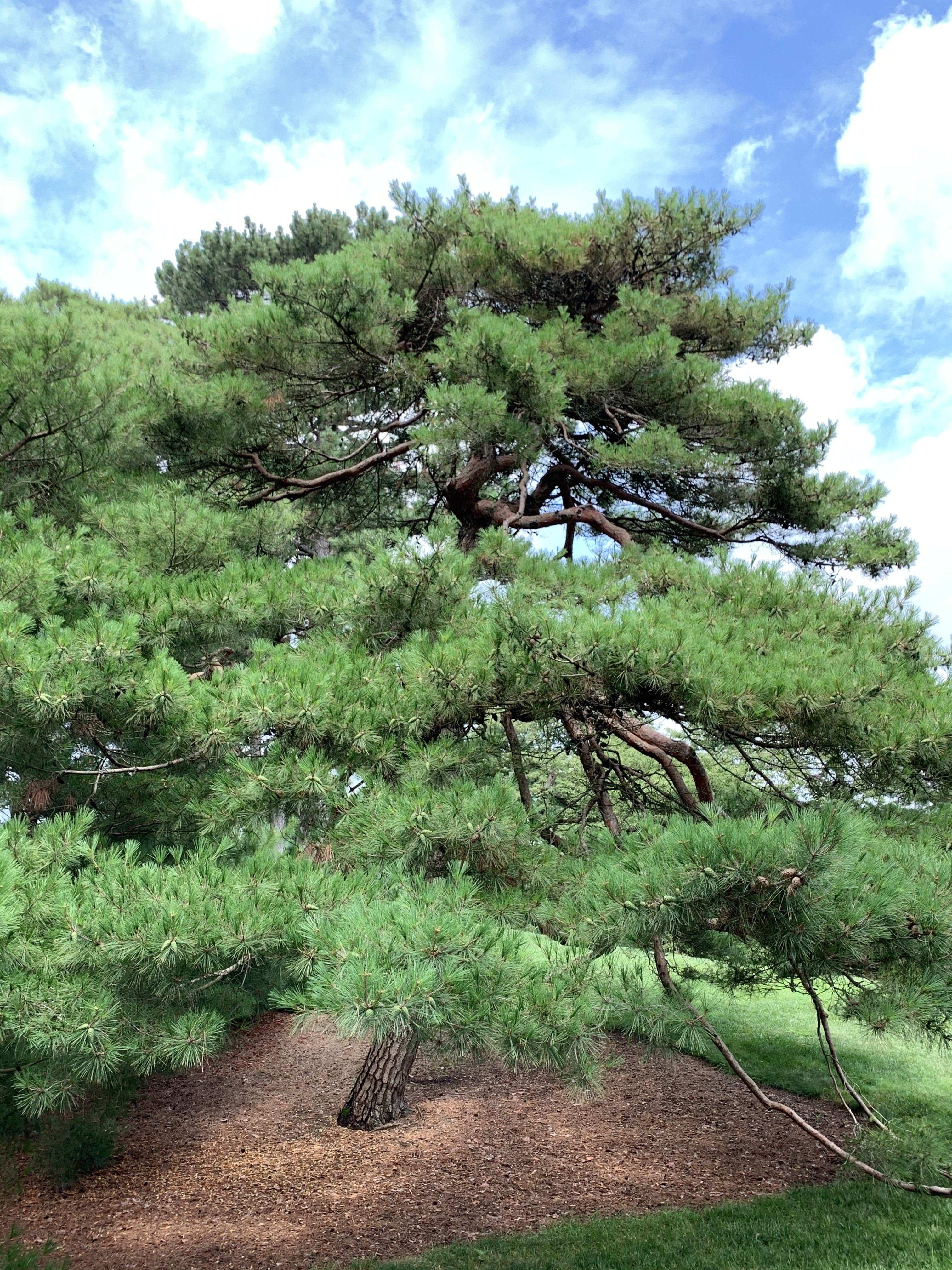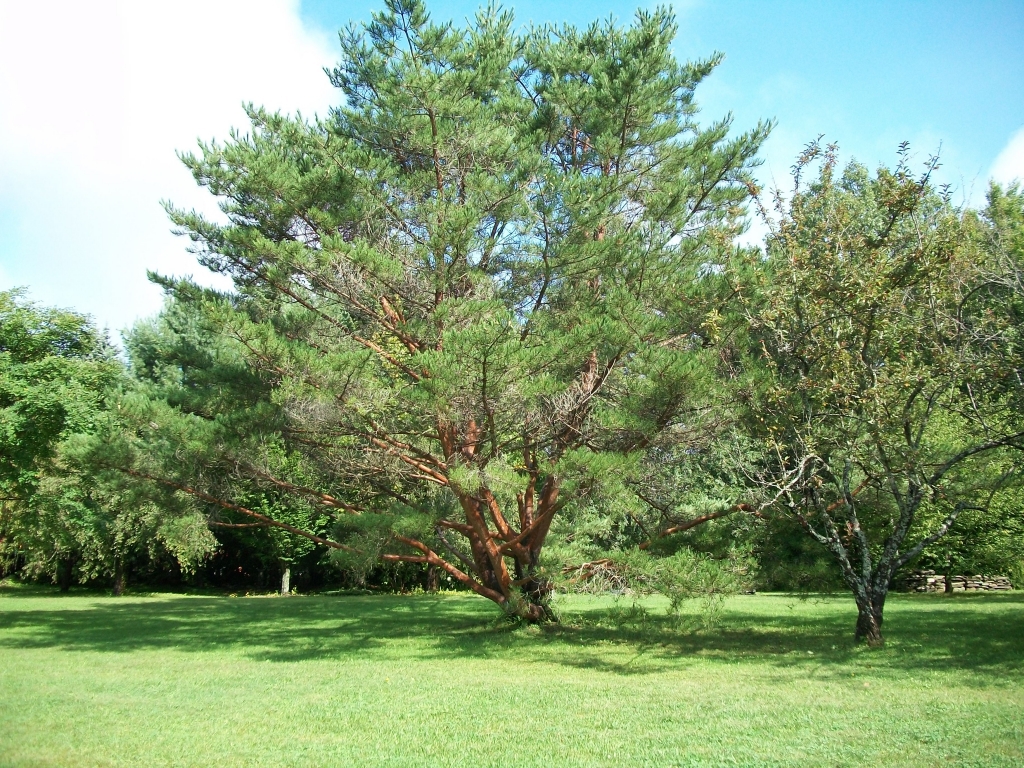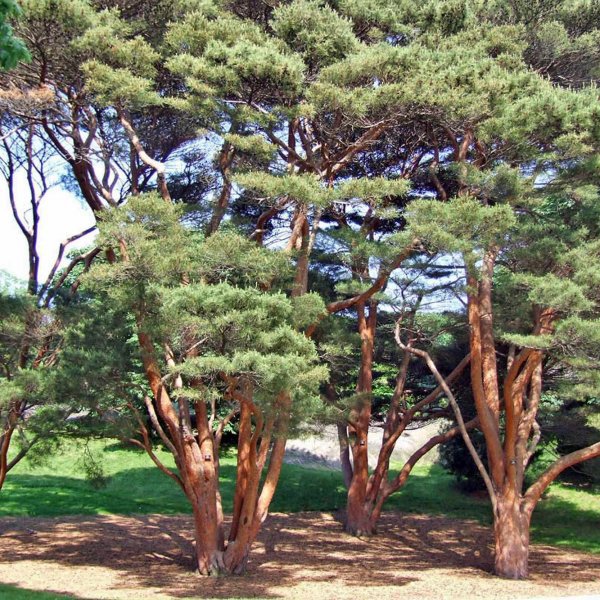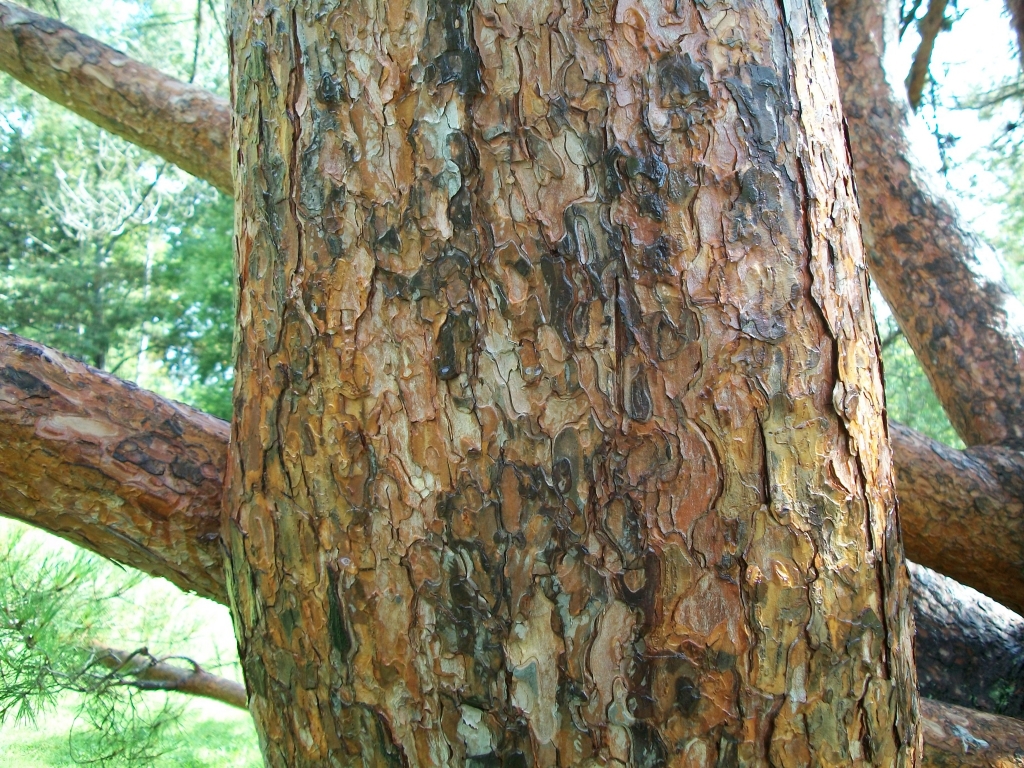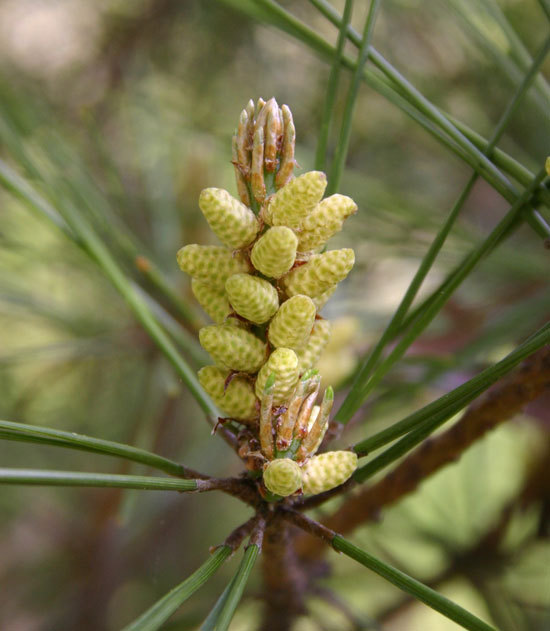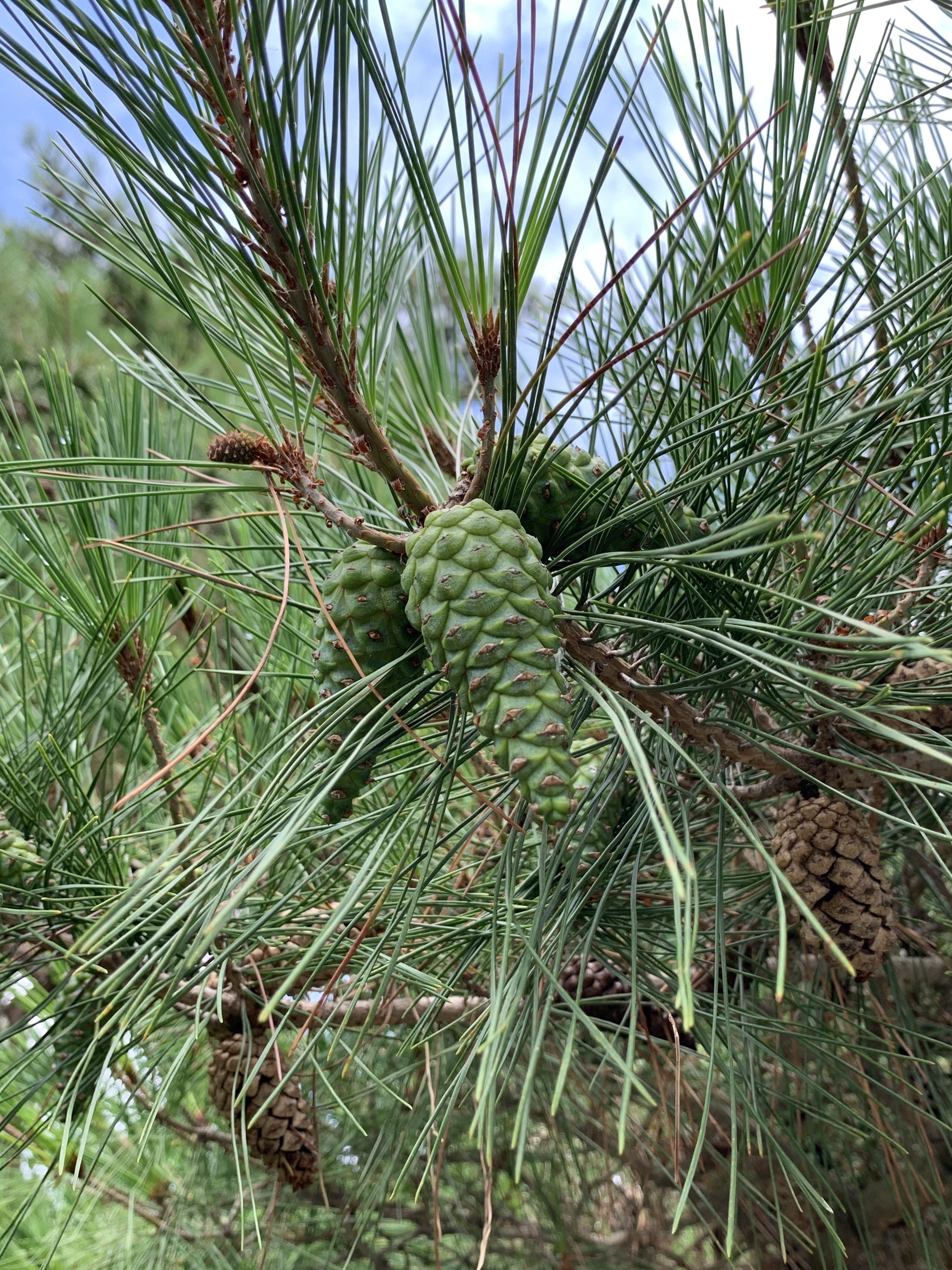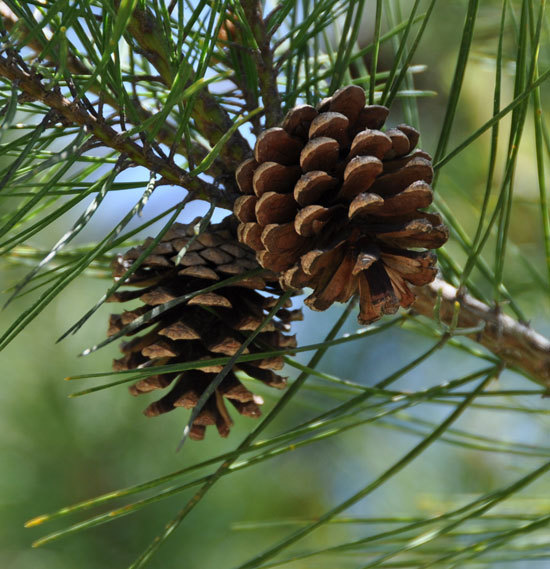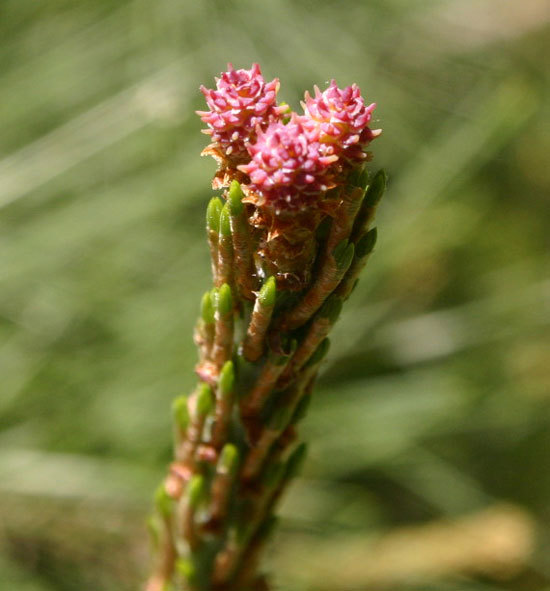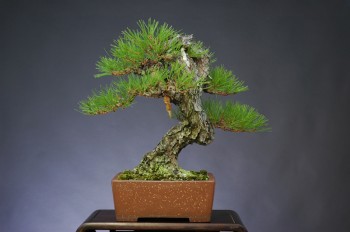
subgenus Pinus, section, Pinus, subsection Pinus. This is one of the 'œclassic' old-world, 2-needled, hard pines.
Pinus densiflora, as described in 1842 by Philipp Franz von Siebold (1796-1866) and Joseph Gerhard Zuccarini (1790-1848), in Flora Japonica, 2nd edition, is commonly known as Japanese red pine; as well as, or as アカマツ (aka-matsu) in the Japanese language, èµ¤æ¾ (chì sŠng) in Chinese, 소나무 (sonamu) in Korean, and СоÑна гуÑÑ‚Ð¾Ñ†Ð²ÐµÑ‚Ð½Ð°Ñ (Sosna gustotsvetnaya) in Russian. The species name describes the dense growth of pollen cones that grow at the tips of the previous year's growth.
There are three known varieties:
Ethnobotany. Historically, this pine has been one of the most important species used in Japanese architecture. The principal structural woods in most surviving structures of the Muromachi period (14th to 16th Centuries) and the Edo period (1603-1867) are Pinus densiflora and P. thunbergii, although surviving structures also contain a great deal of Chamaecyparis obtusa.
Besides following agriculture as a 'weedy' species, it is also one of the more popular ornamental pines, used as such in Japan since ancient times and now widely planted in Europe and North America.
Description. Japanese Red pine is an evergreen coniferous tree which grows straight to contorted (particularly in coastal settings) up to 100 feet (36 m) tall, with an open, irregular or umbrella-shaped crown. Lower branches are shed early even in open settings.
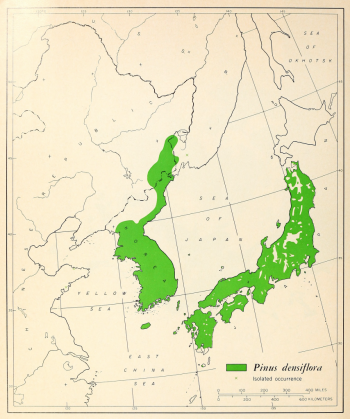
Distribution. The species is native to China - Shandong, and Jiangsu provinces, Korea, Japan - southern Hokkaido, Honshu, Shikoko, Kyushu islands, and Russia where it is rare in southern Ussuriland on rocky slopes at elevations from sea level to 1,500 feet (0 - 500 m) above sea level, or in sandy soils, seashores, Khanka Lake islands.
Hardy to USDA Zone 5 - cold hardiness limit between -10° and -20°F (-23.3° and -28.9°C).
